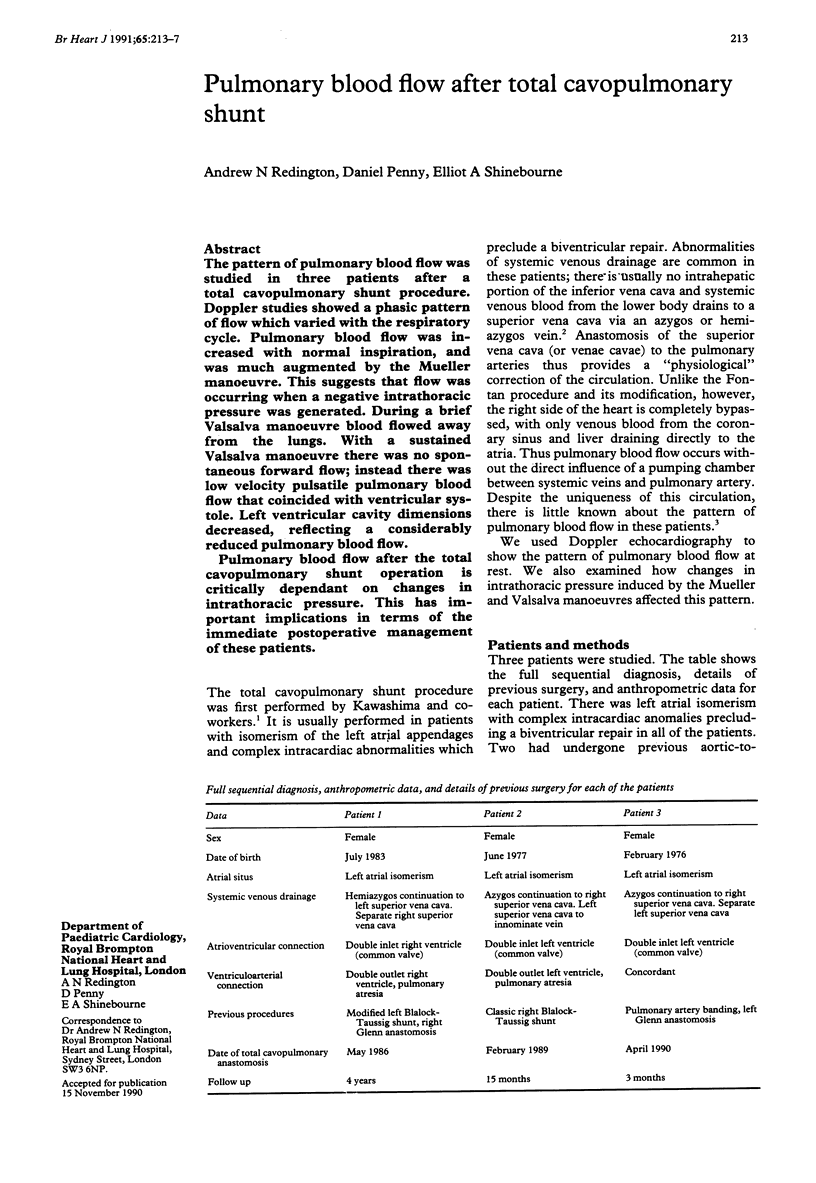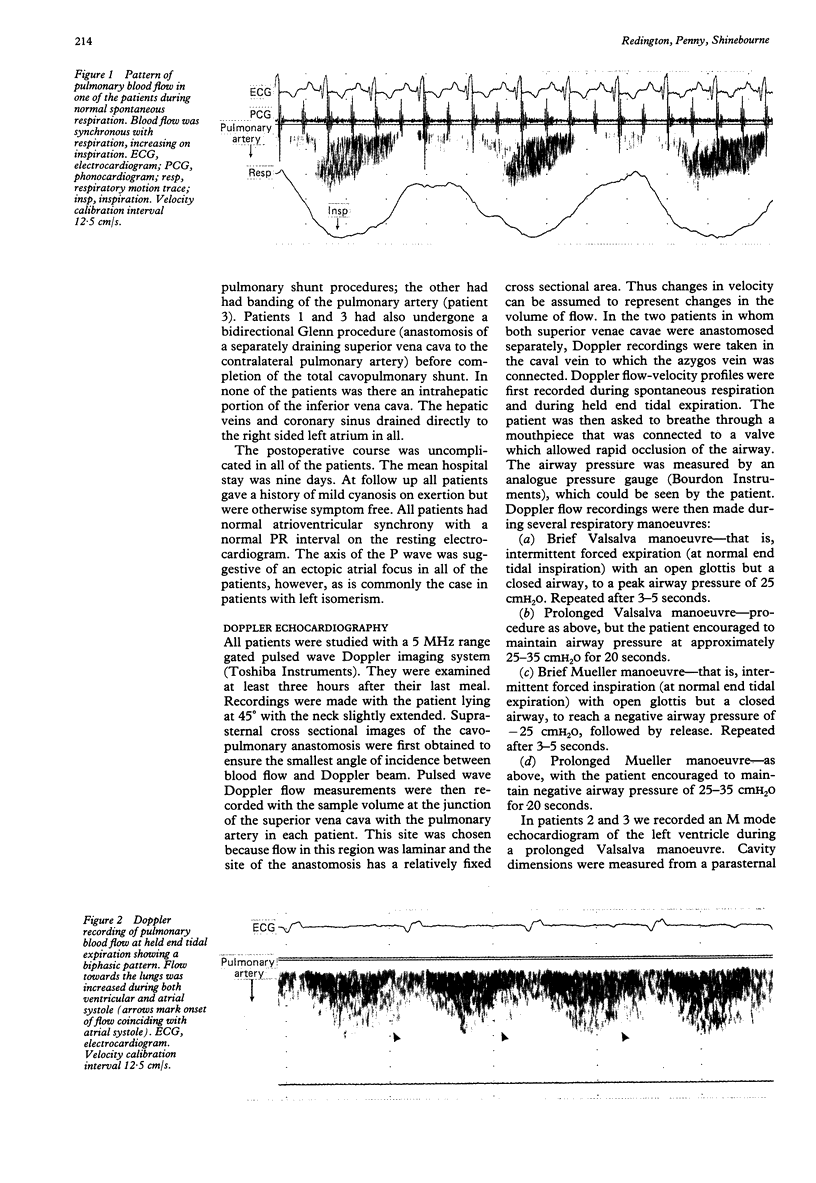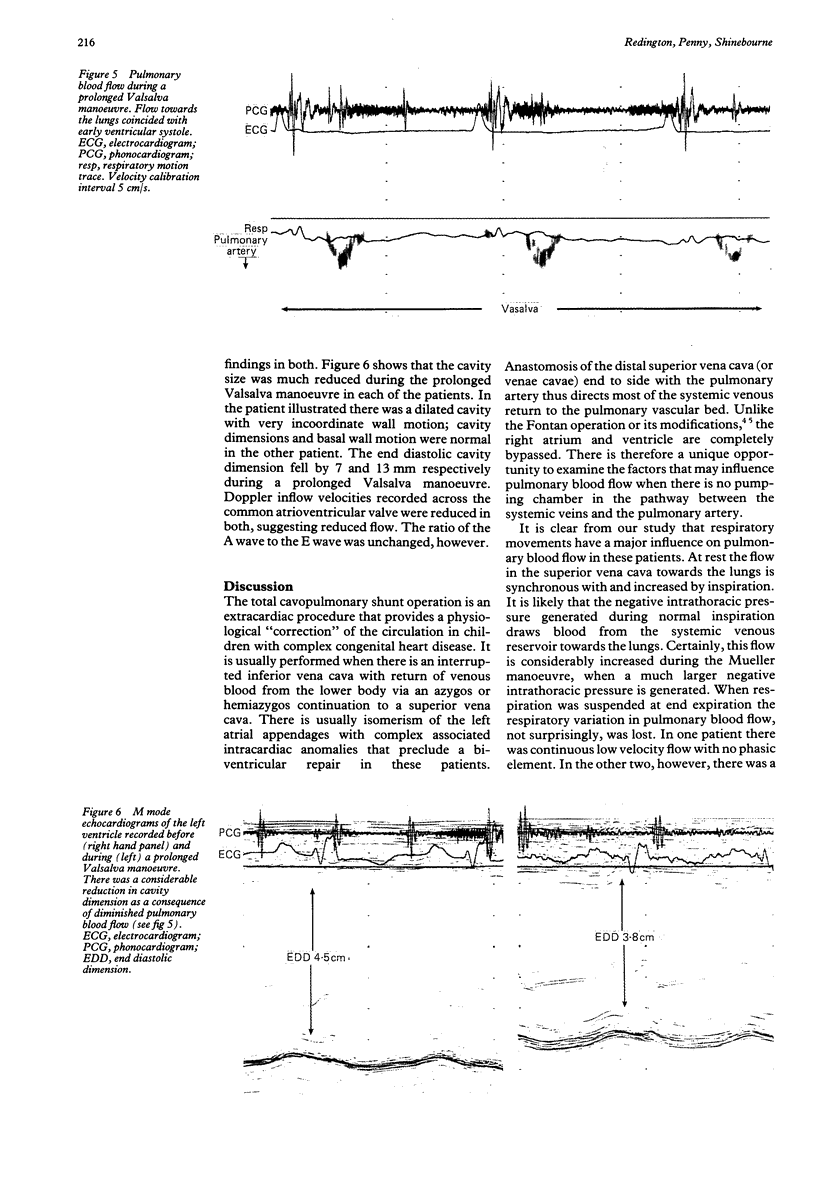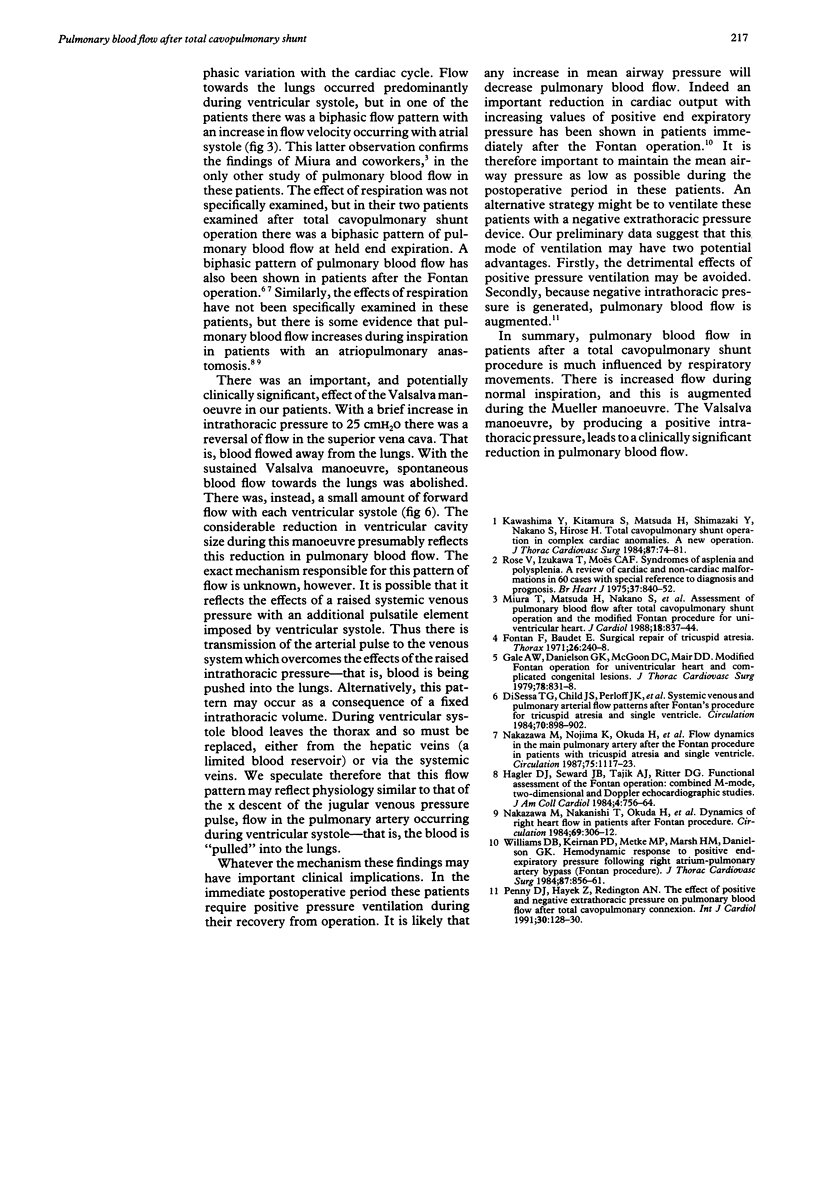Abstract
The pattern of pulmonary blood flow was studied in three patients after a total cavopulmonary shunt procedure. Doppler studies showed a phasic pattern of flow which varied with the respiratory cycle. Pulmonary blood flow was increased with normal inspiration, and was much augmented by the Mueller manoeuvre. This suggests that flow was occurring when a negative intrathoracic pressure was generated. During a brief Valsalva manoeuvre blood flowed away from the lungs. With a sustained Valsalva manoeuvre there was no spontaneous forward flow; instead there was low velocity pulsatile pulmonary blood flow that coincided with ventricular systole. Left ventricular cavity dimensions decreased, reflecting a considerably reduced pulmonary blood flow. Pulmonary blood flow after the total cavopulmonary shunt operation is critically dependent on changes in intrathoracic pressure. This has important implications in terms of the immediate postoperative management of these patients.
Full text
PDF




Images in this article
Selected References
These references are in PubMed. This may not be the complete list of references from this article.
- DiSessa T. G., Child J. S., Perloff J. K., Wu L., Williams R. G., Laks H., Friedman W. F. Systemic venous and pulmonary arterial flow patterns after Fontan's procedure for tricuspid atresia or single ventricle. Circulation. 1984 Nov;70(5):898–902. doi: 10.1161/01.cir.70.5.898. [DOI] [PubMed] [Google Scholar]
- Fontan F., Baudet E. Surgical repair of tricuspid atresia. Thorax. 1971 May;26(3):240–248. doi: 10.1136/thx.26.3.240. [DOI] [PMC free article] [PubMed] [Google Scholar]
- Gale A. W., Danielson G. K., McGoon D. C., Mair D. D. Modified Fontan operation for univentricular heart and complicated congenital lesions. J Thorac Cardiovasc Surg. 1979 Dec;78(6):831–838. [PubMed] [Google Scholar]
- Hagler D. J., Seward J. B., Tajik A. J., Ritter D. G. Functional assessment of the Fontan operation: combined M-mode, two-dimensional and Doppler echocardiographic studies. J Am Coll Cardiol. 1984 Oct;4(4):756–764. doi: 10.1016/s0735-1097(84)80403-9. [DOI] [PubMed] [Google Scholar]
- Kawashima Y., Kitamura S., Matsuda H., Shimazaki Y., Nakano S., Hirose H. Total cavopulmonary shunt operation in complex cardiac anomalies. A new operation. J Thorac Cardiovasc Surg. 1984 Jan;87(1):74–81. [PubMed] [Google Scholar]
- Miura T., Matsuda H., Nakano S., Kishimoto H., Kato H., Hirose H., Kawashima Y. [Assessment of pulmonary blood flow after total cavopulmonary shunt operation and the modified Fontan procedure for univentricular heart]. J Cardiol. 1988 Sep;18(3):837–844. [PubMed] [Google Scholar]
- Nakazawa M., Nakanishi T., Okuda H., Satomi G., Nakae S., Imai Y., Takao A. Dynamics of right heart flow in patients after Fontan procedure. Circulation. 1984 Feb;69(2):306–312. doi: 10.1161/01.cir.69.2.306. [DOI] [PubMed] [Google Scholar]
- Penny D. J., Hayek Z., Redington A. N. The effects of positive and negative extrathoracic pressure ventilation on pulmonary blood flow after the total cavopulmonary shunt procedure. Int J Cardiol. 1991 Jan;30(1):128–130. doi: 10.1016/0167-5273(91)90137-e. [DOI] [PubMed] [Google Scholar]
- Rose V., Izukawa T., Moës C. A. Syndromes of asplenia and polysplenia. A review of cardiac and non-cardiac malformations in 60 cases withspecial reference to diagnosis and prognosis. Br Heart J. 1975 Aug;37(8):840–852. doi: 10.1136/hrt.37.8.840. [DOI] [PMC free article] [PubMed] [Google Scholar]
- Williams D. B., Kiernan P. D., Metke M. P., Marsh H. M., Danielson G. K. Hemodynamic response to positive end-expiratory pressure following right atrium-pulmonary artery bypass (Fontan procedure). J Thorac Cardiovasc Surg. 1984 Jun;87(6):856–861. [PubMed] [Google Scholar]








